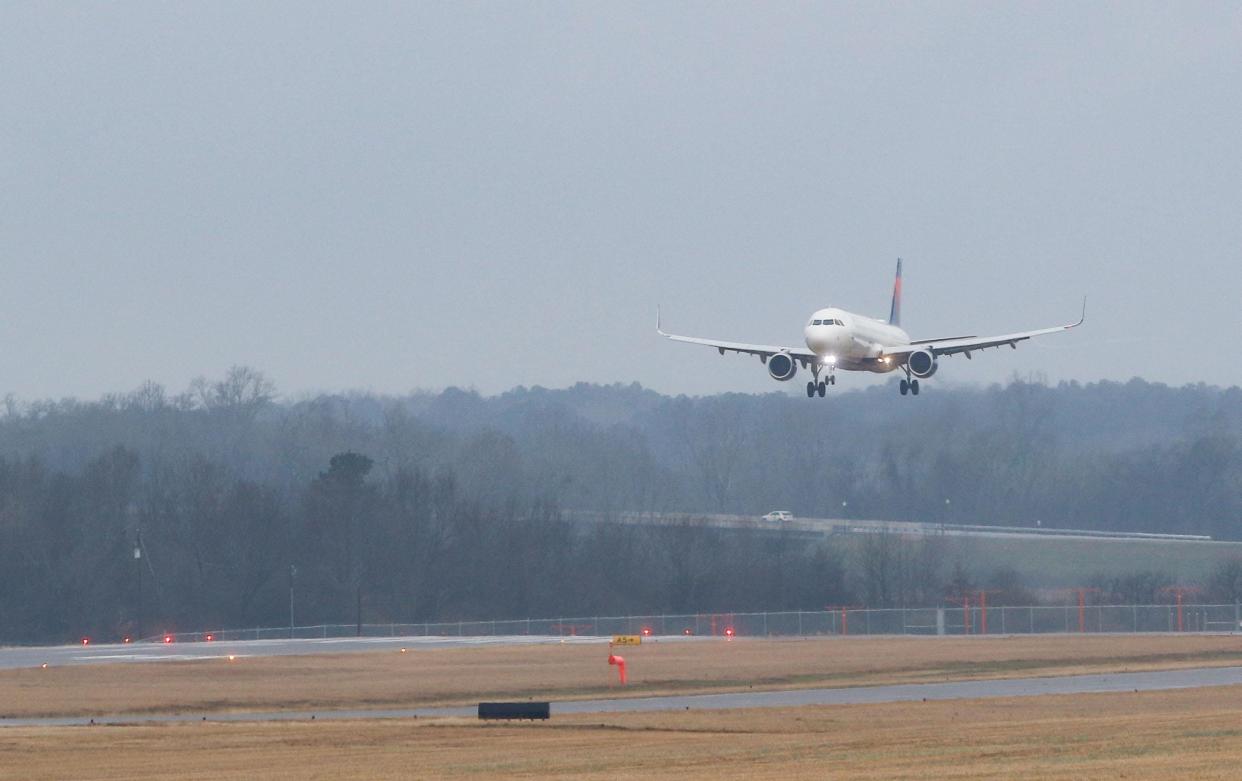See what City Hall plans for its 102-acre addition to the Tuscaloosa National Airport

City Hall has purchased more than 100 acres of land adjacent to the Tuscaloosa National Airport to accommodate a future runway expansion.
The City Council approved the $2.522 million purchase last week of 101.99 acres, primarily to the southwest of the existing airport facility, which will allow for the eventual growth of the airport’s main runway.
“Consideration for expanding airport property is an ongoing evaluation process based on the airport’s ability to accommodate current and future capacity demands,” said Jeff Powell, director of the Tuscaloosa National Airport. “Land use planning around the airport is an important factor for us as some development is not favorable for aircraft operations.”
More: Securing commercial air service remains goal for Tuscaloosa National Airport
These unfavorable developments include towers or tall buildings, and while Powell said there are not immediate plans to begin work on a runway extension, the city’s acquisition of the land ensures these kinds of projects won’t hamper the city’s intentions.
In this case, property owner group 1871 LLC – a partnership between Tim Harrison, owner of Northport-based J.T. Harrison Construction Co. Inc., and Ron Turner, a longtime owner of area restaurant and retail ventures – approached the city to gauge interest in acquiring a portion of land adjacent to the runway. This offer came as airport officials were undergoing a routine update of the airport’s master planning process, something required by the Federal Aviation Administration (FAA) every 10 years or so.
While the city ultimately did not purchase all of the land that 1871 was offering, Powell said negotiations ultimately led to the “agreeable terms” that allowed City Hall to acquire land for future airport purposes.
“Our most recent airport master plan update identified future expansion needs for an expanded runway,” Powell said. “The recommendation for an expanded runway is based off of an FAA-approved aircraft fleet mix. Having the capability to accommodate larger and higher frequency of cargo aircraft is the primary factor. Accommodating additional aerospace economic development projects is a secondary factor.
“For other sectors of aviation – military, charters, etc. – a longer runway provides additional safety parameters for both takeoffs and landings.”
More: 'Realizing the dream:' Larger, better runway to aid industry, commercial air efforts
Powell said that, based on these current and known future needs for expanded cargo support and aerospace development, the runway expansion is a current project that airport and city officials are prioritizing in its annual grant applications with the FAA. If approved, these projects typically are 90% or 95% federally funded as a part of the Airport Improvement Program, with the city making up the remainder.
“The additional property would allow for the possibility to expand the runway whether it’s in the near-term or long-term future,” Powell said. “Having it officially a part of the airport’s property protects it from future incompatible development that would prevent future airport development.”
It’s also in line with the city’s ongoing efforts to secure a commercial air service provider.
Earlier this year, the City Council approved a contract with Indiana-based Volaire Aviation Consulting to identify and recruit a passenger-based flight provider to Tuscaloosa.
This 12-month contract is priced at $47,000 with a performance bonus of up to $20,000 and will be at least the third such contract with Volaire to achieve the commercial air service goal.
“We’re actually committing to getting air service,” said Selvyn Greene, director of infrastructure for the city’s Infrastructure and Public Services department, under which the airport falls, in January. “We’re not stopping until we get it.”
The contract with Volaire was part of a multi-prong update to the airport’s strategic operating plan – the first since 2019 – as adopted by the Airport Advisory Committee.
This plan contains a number of goals, from securing federal funding to aid with runway expansion and improvements to the airport’s terminal to, ultimately, finding federal dollars to assist with the recruitment and retention of a passenger airline.
It also includes increases for fuel, landing and special event fees that will be tied to the weight of aircraft.
Increasing these fees is meant to help keep as much as the airport’s annual $800,000 to $1 million in operating costs off the shoulders of local taxpayers while ensuring larger and heavier aircraft pay their fair share.
Now known as the Tuscaloosa National Airport, this facility was acquired by the city at the end of World War II.
The 724-acre property includes two runways, two fixed-base operators, a flight school and a car rental facility.
The airport was home to commercial airline service for about 50 years before American Eagle, a regional subsidiary of American Airlines, ceased operations in 1997. Other airlines through the years offered daily flights to regional hubs like Atlanta, Georgia; Jackson, Mississippi; and Memphis, Tennessee.
This article originally appeared on The Tuscaloosa News: City planning runway addition to the Tuscaloosa National Airport

